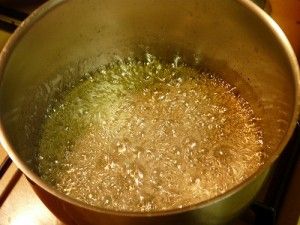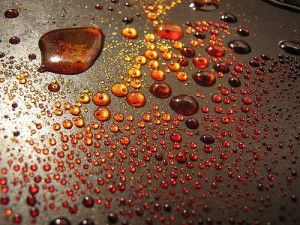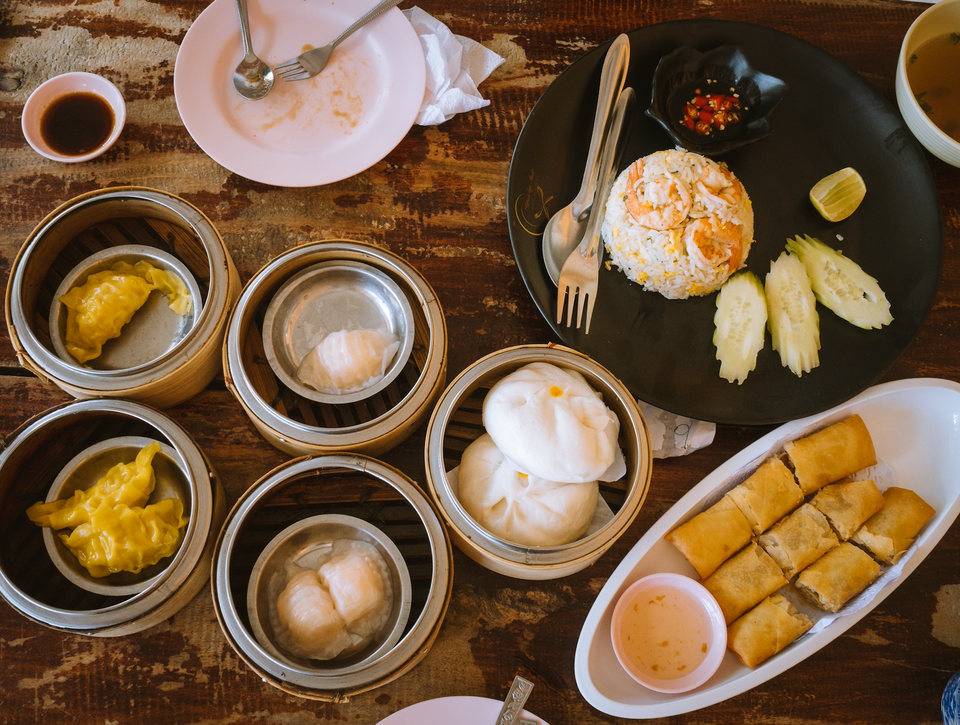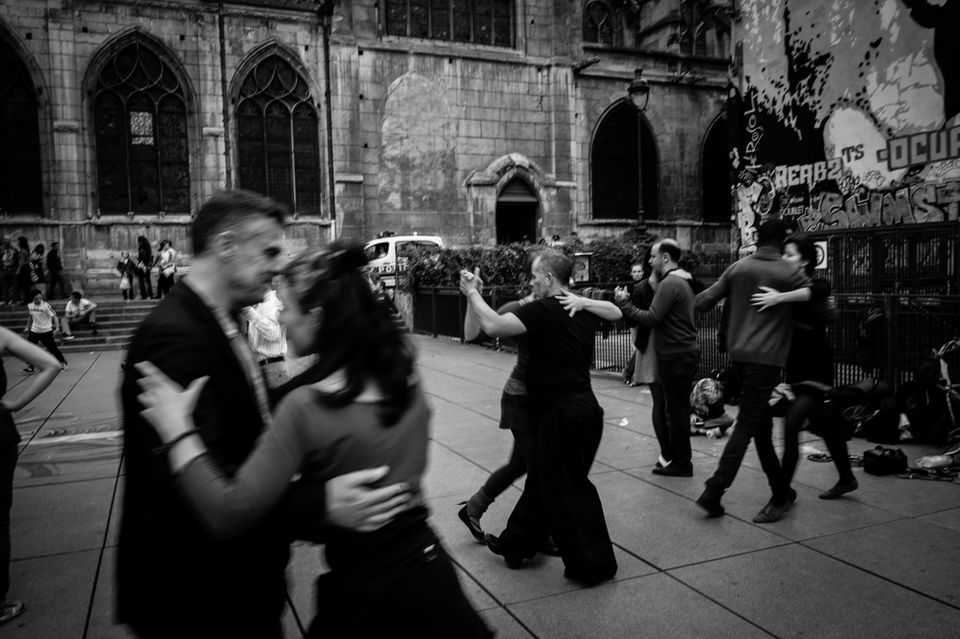
So long ago I can’t remember when exactly, I heard that cliché, “begin at the beginning,” and it made a deep personal impact on my writing life. No longer would I jump into a story with, “Assassin Prince Daniel wind-milled his arms as he leaned over the icy precipice…” From then on, I would only begin at the beginning. “Assassin Princes are cowabunga and rich and can do a move where their finger touches your brain. Assassin Prince Daniel was born on the back of killer whale…” This is only relevant because I proposed a series for The Curator on some of the basic ingredients/confections in every pastry chef’s repertoire-a sort of beginning in pastry as a craft. And here we are-caramel.
But before I begin the beginning, I should also add that my favorite part in The Watchmen, by Alan Moore, (soon to be the newest film that isn’t as good as the book) is when a character says that the first thing you should write is the saddest thing you can remember. That way you get the reader’s sympathy on your side. When I read that, I immediately changed Assassin Prince Daniel’s origin story to, “his parents get shot in an alley, and he was born an orphan on the back of a killer whale.”
These days, the saddest thing I can think of is caramel. Not honey caramel or crème caramel, just regular caramel. Plain as pine. Sugar, water, fire, cream. Simple. Demonstrably irrefusable. Ontologically delicious. In a lot of ways, caramel is the quintessence of dessert. It’s creamy, lustrous, opulent. It’s almost straight sugar, brought to a boil till it browns. Then it’s mixed with fat and milk solids so it’ll stay soft instead of seizing into hard rock candy. As a sauce, it adds a homey kind of indulgence, like slathering whipped butter on buttermilk pancakes. As a filling, it’s a sure favorite. As a main course, it would probably still sell through most nights. It is the Platonic ideal of sweet. Caramelizing something is pretty much the phrase for making it taste good.
But for some reason, every time I think about caramel I turn into a soppy dishrag. I won’t look you in the eye. The awkward intensity of my quiet would have you thinking I just plummeted from a sugar high so astronomical it would make John Glenn holla back.
I hate caramel because of Salma, my inimitable mentor-a lady so good at her job that she had time to guide me step-by-step through each day, and then go back and fix all the mistakes I made before service.
I began working for Salma right after my pastry job, which was actually as an instructor. So at that point I still only knew the stuff in the textbooks. For example, I could tell you the term caramel is referring to two things. The first is a stage in the heating of sugar (with a liquid, usually water) right after the “hard crack” stage (315-320F), when it begins to brown. The light caramel stage is at around 338F, while a dark caramel can go all the way up to 345-350F (Professional Chef, 49). A little further and you have “burnt caramel,” which some pastry chefs have managed to pawn off as gourmet. And after that you’ve got tar and a wrecked pot.
The other meaning of caramel, of course, is the confection made from adding boiling cream and butter to the caramel stage. That would be your caramel chews, Sugar Daddies, Milk Duds, etc.
The first meaning of caramel was discovered before The Crusades, by the Arabs (or it could have been the Persians, a proud and industrious folk, we may never know). Many Middle Eastern confections are fried dough, dried fruits, or ground nuts, candied in various syrups. In fact, their caramel was a simple sugar, water, and lemon juice, which harem ladies also used as a hair remover (Toussaint-Samat).
The caramel confection was discovered by a dude in the Midwest in the 1880s, who added milk to his butterscotch recipe. It almost immediately took the world over, especially Britain, where they already had a taste for their own invention, toffee. American confectioners went into mass production. A young Milton Hershey created the Lancaster Caramel Company, and later discovered a knack for butchering chocolate when he was looking for a caramel coating (Glenn Brenner, 26, 86).

That’s the kind of stuff I could rattle off for Salma, which is to say, useless factoids. It was Salma who made me learn everything, “with my hands.” She showed me how to feel when a batter is consistent but not over-mixed, or a custard is perfectly thickened but not overcooked.
Salma, if anything, has a melodious personality. She’d hum lullabies to her pizza dough before “tucking it in for bed.” She would prance around the kitchen telling me that everything would come together if you were in tune with the oven gods. Like some gastronomic guru, she’d show me how to roll flatbread paper thin, practicing to “move with the rhythm of the dough.” And crazy as it may seem, it worked. If you’ve ever worked in a kitchen, you know there is a mysticism to it-a bunch of chemistry, yes-but miracles too. If I moved stiffly, pulling the dough with one hand while cranking the roller with the other, the gossamer sheets would puncture and shred. But whenever I quieted that snide, snickering, child-of-divorce cynicism for one minute and actually bought in to the “harmony of the spheres” thing, I’d become a whirling dervish of perfect synchronous bread making.
So this one time, when we were making caramel together, Salma was telling me to keep the sides of the pot clean, as the molten sugar gets up to around 338 degrees. You have to be careful that there isn’t any trace amounts of dried soap or imperfections in the pot, because at those temperatures, if a bubble pops, and even a tiny droplet of the liquid spills onto your hand, it will sear through your skin and cling to the meat, burning down into your flesh as you scream and try to rip it off. And then, if it’s still hot enough, it’ll stick to the finger you grabbed it with and scorch that too. It’s the worst kind of burn, worse than steam burn.
Salma showed me a darkened splotch on the back of her hand, like a carved and craterous birthmark. “This was from about a half teaspoon of it,” she said. I looked at her hand-the rest of it was speckled with oven burns. She wasn’t proud of them, the way I would have been, whipping them out to show off like obnoxious ten-year-olds. They marred her umber skin into a burnt umber, a deep insecurity for her, when she wore sleeveless dresses.
“People think my job would make me a great housewife, but it’s not very ladylike. We’re not ladies in the kitchen,” she’d say while taking a smoke break (which she’d feel guilty about later). She had a sleeve of tattoos on her forearms, dainty red and yellow daisies intertwined like the tiaras little girls make. When I get stuck thinking about it, a girly tattoo is the most appropriate symbol for being a pastry chef. I don’t have any way to explain that.
So I remember thinking how sad it was that Salma had those burns from all the caramel she’d made over the years. How she’d always feel a little awkward to show her hands on a date. How obviously she wanted to be a lady, and how difficult it was to seem “ladylike,” in a kitchen no less, and on her way home, as the shiny office girls strutted in heels and she in her chef clogs. It would have been weird to try to tell her that she was a gentle woman, a beautiful person, hot as caramel, sweet as sugar, a lady if ever there was one-so I just got the cream and butter and poured it into the sizzling vat till she told me it was enough.
The caramel surged up in the pot-even boiling cream is too cold for the burning sugar. Salma stirred in the fats to create the perfect gloss and consistency. And then carefully, very carefully, I poured the steaming brew into pints.
Salma grabbed two of the pints to take up front for service, and I started wiping down the station. After mis-en-place is set up, dessert orders don’t come in for another thirty minutes or so, while the first wave eats their entrees. It’s a good time to clean the back kitchen and start production for the following day.
That’s when the most inhuman howl of pain I’ve ever heard rippled through the restaurant. I ran to the dish washer’s station, between the front and back kitchens, where one cook was standing dumbfounded, with a pool of hot caramel burning through the mats at his feet-and Salma, screeching as she shoved her arms into the brown dishwater, clawing at the caramel eating away both her arms. By the time she pulled her arms out, shocked into silence, they were mutilated, the red and yellow flowers distended in the welting meat. The globs of caramel in the dishwater were still so hot they hissed at her as she hysterically searched for all the drops on her arms. Every synapse in her brain must have been rioting with pain. She couldn’t even tell where it was coming from. She ripped each one off as though they were leeches, flinging them as fast as she could into the water.
The dishwasher stood as far away as he could, eyeing me and the cook. None of us could do anything but watch her struggle. And then finally, with that calm of true emergency, she rushed out of the kitchen.
“What happened?” I said to the wide-eyed cook clutching his spoon like an excuse.
“I-I was just coming in, and she was going out.”
He didn’t need to explain that he had come in through the out door. I went back to my station. I tried to follow her, but she had already hailed a cab. I don’t think she’d let me come with her anyway. God knows the hell that would ensue from our patrons missing their daily immolation of bonbons.
I went back into the wash station to find the dishwasher fearfully, almost reverentially, wiping up the spilled caramel. I went out front and told the runner to 86 the caramel bread pudding. I thought of the sheepish way she’d shown me her scars earlier, how huge they had seemed then, and her uncomfortable relationship with the career she loved. I thought of how Salma wanted to be ladylike in an unladylike job. How she’d tried to cover the discolored pockmarks on her forearms with delicate drawings of flowers, almost like a little girl would. Those little burns that she was so ashamed of wouldn’t even register anymore. Most of them were probably ripped off in chunks with the candy.

And that’s pretty much the saddest thing I can think of.
After prepping for the next day, plating whatever orders came in, and being the last to clean up my station, I left for the day.
Salma’s better now, though when the savory guys have their pissing contests and compare scars, she can blow them out of the dishwater. I’m still petrified of caramel. People ask me why that is, and my best response is to mumble. But caramel is soooooo gooey and delicious, they protest, as though I’m an apostate Keebler elf. I don’t usually take the time to explain that it reminds me of all the ugliest parts of all the prettiest things-those misshapen flowers. Like that look on Gatsby’s face near the end of the party. So the only thing I ever think to say is, the daisies aren’t exactly daisies anymore.
1. Culinary Institute of America, The. The Professional Chef. John Wiley & Sons, Inc., New York. 2002. pg 49.
2. Toussaint-Samat, Maguelonne. A History of Food. 1987, translated by Anthea Bell 1992, Blackwell Publishers, Cambridge, MA. (Another interesting fact I ripped from that book is that the name for the island Crete, in Arabic, was from the word “Qandi,” or “crystallized sugar,” because Crete was the site of the first sugar refinery, built by the Arabs.)
3. Glenn Brenner, Joël. The Emperors of Chocolate. Random House. New York, 1999. pg 26, 86.



